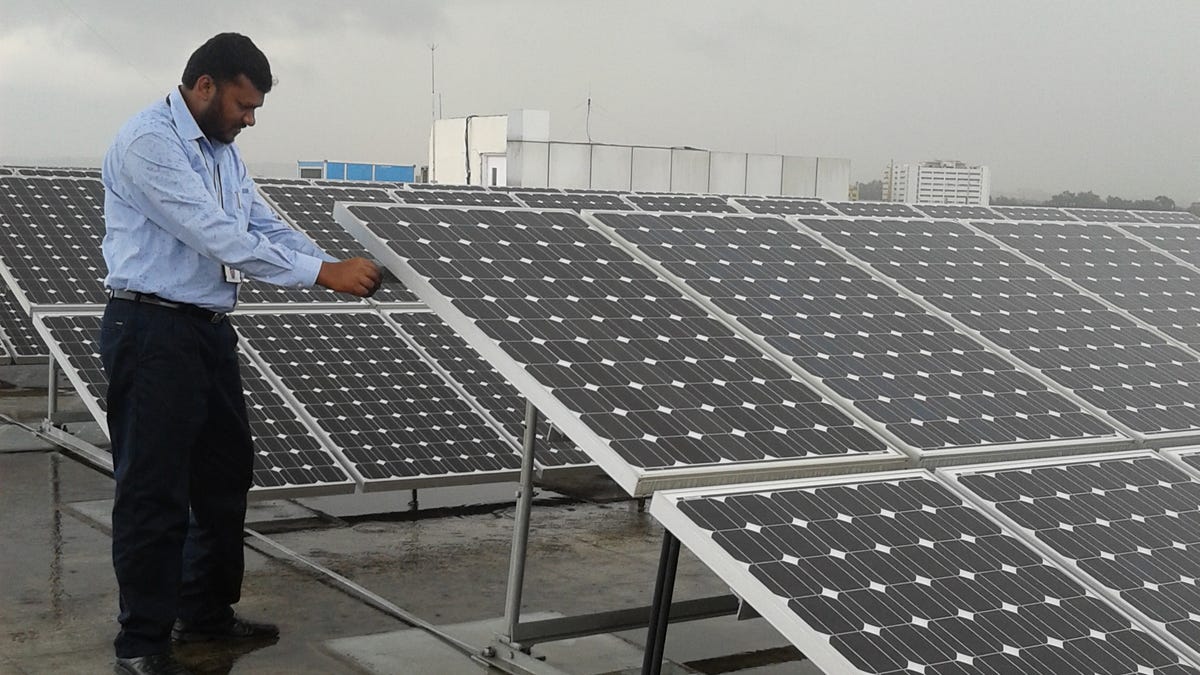IBM brings solar power to data centers
An IBM pilot project couples solar panels to high-voltage direct-current servers to save energy and provide on-site power to remote locations with unreliable or unavailable power.

IBM is bringing electric power--in the form of solar panels--to data centers with trouble getting power in the first place.
The company tomorrow will detail a pilot project that couples solar power with water-cooled servers that run on high-voltage direct current. The method results in about a 10 percent energy savings by reducing the losses that normally happen in converting from alternating power from the grid to the direct current servers run on, according to Kota Murali, the chief scientist of nanotechnology at IBM India who developed the pilot as a side project.
That level of energy reduction is significant for large data centers with many servers, but the implications of solar and servers are potentially profound for places that don't have access to reliable power, Murali said.
A bank, for example, that wanted to set up a remote branch and operate a data center could use solar power as a way to supplement power from the grid and on-site generators. IBM plans to offer the system in custom engagements next year. Clients in developing countries have already shown an interest.
"Everybody is talking about getting connectivity from the grid. The cities are already overloaded so they need ways to generate local power," Murali said. "You can start connecting unconnected parts of the world using this kind of system."
The system is designed so that power will be pulled from the grid at night or when there isn't sufficient voltage to run servers directly. Power conditioning units dedicated to supplying the data center can automatically switch between power sources.
IBM's India Software Lab in Bangalore has set up a 50-kilowatt rooftop array to power about 20 percent of its data center.
Murali was motivated to work on creating the configuration after hearing a talk on energy-efficient computing. When he realized that modern IBM servers can run on high-voltage direct current, he thought to use solar panels, which produce direct current, as a source.
When wired in series, solar panels can produce sufficient voltage, at between 380 volts and 575 volts, to power a server. In places where the grid is not reliable, data center operators will likely still use a diesel generator backup but the solar panels can reduce their fuel cost and cut carbon emissions, Murali said.

